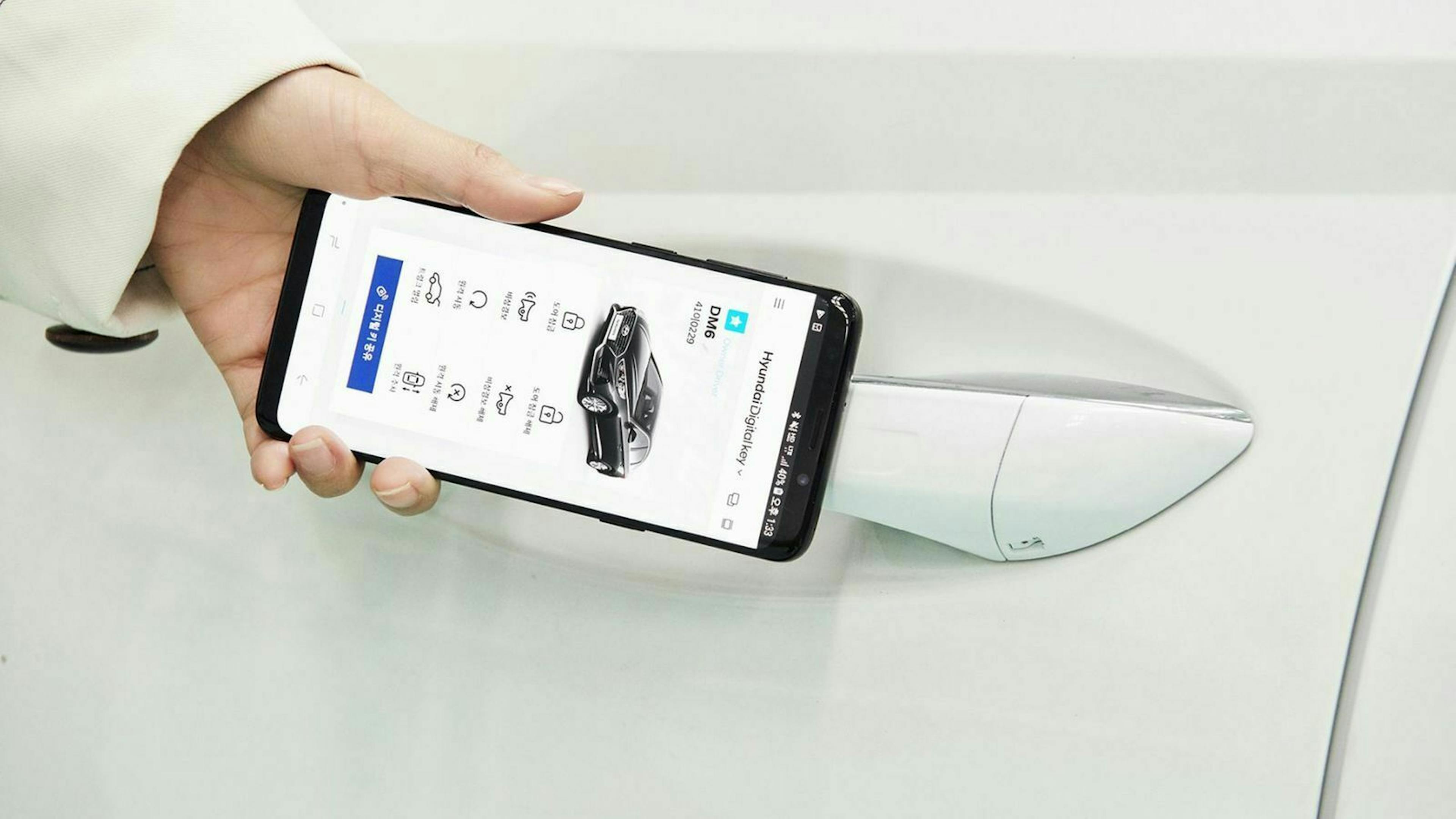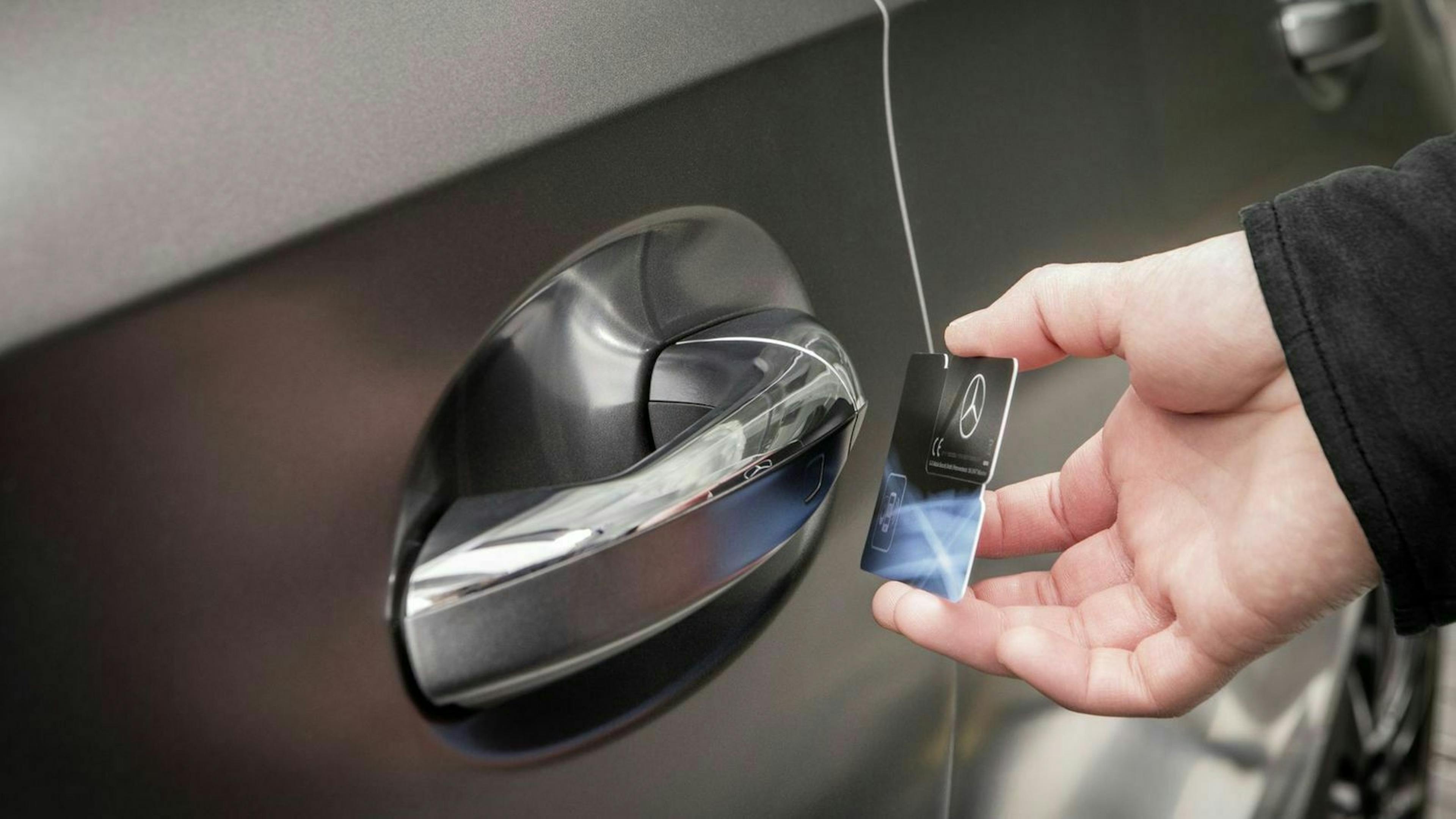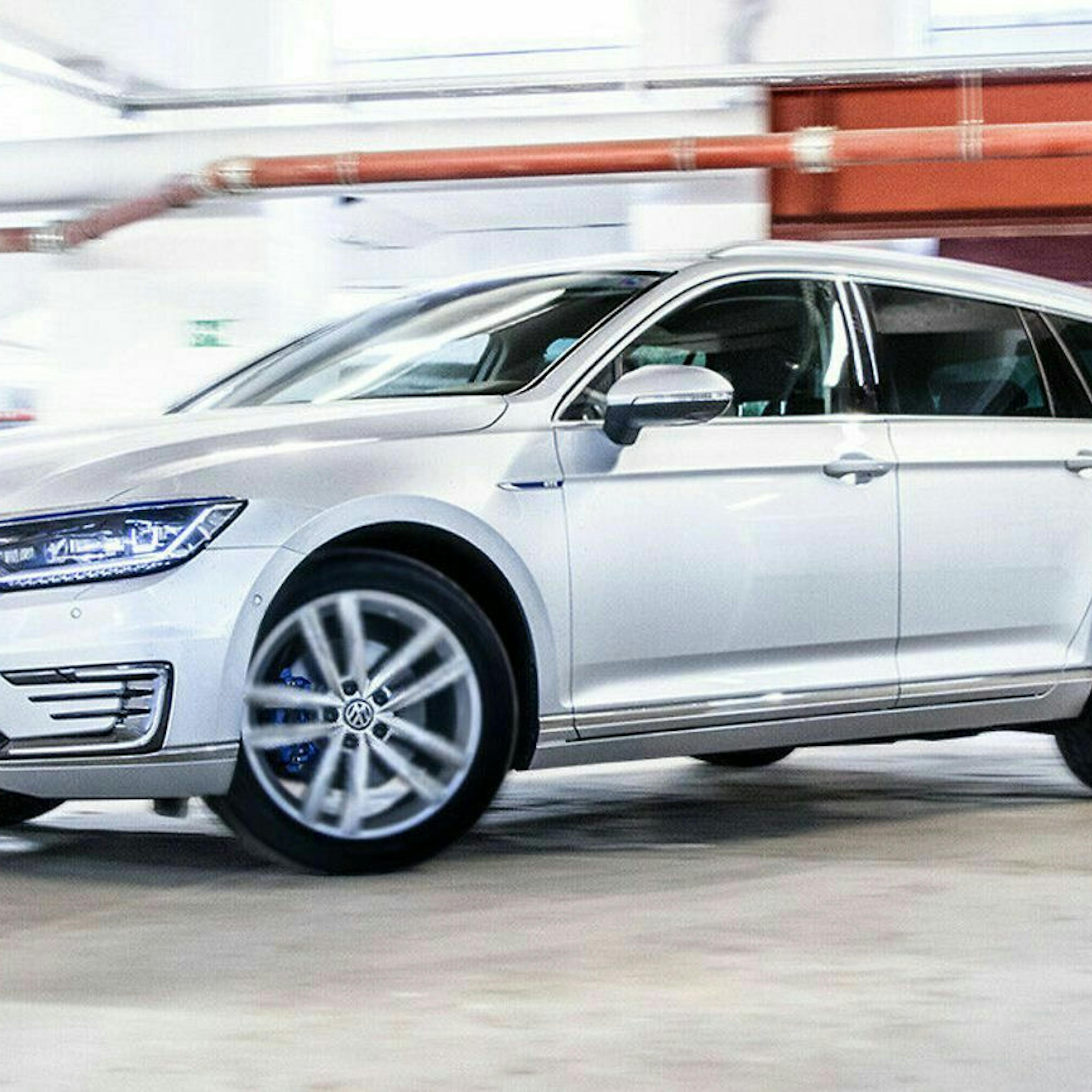Mobile phone as car keys: All information
The car dealers will not let themselves be deprived of the ritual of handing over the keys when buying a new car. After that, however, the key with the vehicle registration document could disappear in the drawer. The car industry wants to eliminate the classic car key from everyday driving. It is being replaced by the smartphone. The idea came from Japan, and in 2008 Nissan and Sharp showed the first prototype. At that time, interest was low: The first iPhone had only been introduced in 2007, smartphones were still new. Today, they are part of everyday life. Manufacturers assume that most new car buyers have such a device.
Mobile phone as car keys: The most important things in brief
- So far, mainly isolated solutions
- Implementation via NFC, Bluetooth or mobile communications
- Future NFC standard published since April 2020
- New models could be launched in 2021
The advantages: Unlike the physical key, digital keys cannot only be assigned to one person at a time. The owner can send permission to open the car to any mobile phone. He can grant the authorization permanently or temporarily, for all functions or only for some. This allows valet services, for example, to park the car. Car rental companies can hand over the car to customers without a key. The industry is also planning new business models such as integrated smart home and mobility services. Last but not least, it will then need fewer car keys.
High security requirements
Nevertheless, the technology must first gain acceptance from the customer. With the integration of the key into the smartphone, the number of possible risks grows. Unlike most car keys, the mobile phone is usually online and thus vulnerable to malware. What happens when the phone is reset? Physical interventions, for example after a mobile phone theft, also threaten the integrity of the system.

Data security is therefore the focus of the Car Connectivity Consortium, which has developed an industry-wide standard. The developers benefit from the fact that modern smartphones are already equipped with security technologies such as fingerprint scanners or facial recognition. Unauthorized copying, modification and deletion of keys must be prevented, as must the unauthorized creation of new keys or the interception of data transmissions. If the owner sells his car, the new owner must be able to delete all existing authorizations.
In order to meet these safety requirements and reduce costs, the automotive and tech industries have been working on the uniform standard since summer 2016. All systems available until around mid-2018, on the other hand, are individual solutions, some of which will be further developed on a proprietary basis.
NFC becomes the standard
Modern mobile phones are basically prepared for opening cars: The necessary chip for "Near Field Communication" (NFC) is found in most smartphones and enables data transmission between devices over short distances. The car manufacturers mount the counterpart to the chip in the door handle of the car. Customers of car-sharing programs are already familiar with the principle: With services such as Share Now, they reserve, open and close the rental car keyless via app. The difference: The technology works in the mobile network. In underground car parks or areas without network coverage, the car-sharer system does not work.

This changes with the use of NFC. To use it, the driver must install an app from the car manufacturer and register his smartphone in the car. New car models have the necessary connection to the mobile phone network anyway, which is required for the prescribed emergency call standard eCall. After registering the smartphone, the digital key works without the Internet. Then the car recognizes the assigned NFC chip even if the cell phone battery is almost empty. If the chip is in the car, the technology allows the vehicle to be started like a remote key.
These manufacturers offer digital car keys
Manufacturers such as Audi, BMW and Mercedes offer NFC keys, but some of them have developed their systems on their own. For example, the BMW system only works with Apple's iPhone. Mercedes is even switching the "digital vehicle key", which originally works via smartphone, to an NFC sticker at the beginning of 2020. It can – but does not have to – be stuck on the mobile phone. Daimler justifies the change with doubts about the security of the mobile phones available on the market. Volume manufacturers such as Ford and Hyundai have so far only offered mobile network-based systems, while Tesla uses a solution via Bluetooth in the Model 3. This is a pure convenience feature. Tesla drivers should still carry the key or key card with them. Otherwise, the car cannot be opened or started in the event of an app malfunction.

Overview: Digital car keys
| Brand | NFC/Mobile Network | Sales name | Feature |
|---|---|---|---|
| Audi | NFC | Audi connect key | so far only with Android |
| BMW | NFC | BMW Digital Key | only Apple from iOS 13.6 |
| Ford | Mobile | FordPass Connect | Subscription: 1.99/3.99 EUR per month |
| Hyundai | Mobile | Bluelink | Vehicles from autumn 2020/older models with upgrade |
| Mercedes | NFC | digital vehicle key | from 2020: NFC sticker instead of smartphone |
| Porsche | Mobile | Porsche Connect | via Vodafone network |
| Tesla | Bluetooth | standard | up to 19 keys |
| Volvo | Mobile | Volvo On Call | not for all models |
| VW | NFC | We Connect | depending on the model/so far only Android |
(As of January 2021)
Will the Digital Key prevail in 2021?
Three more major car manufacturers are to follow in 2021. This is reported by the supplier Continental, which has concluded corresponding contracts. These systems will then be based on the industry-wide "Digital Key" standard of the "Car Connectivity Consortium". The research network has experience in the development of uniform standards. He has already developed "MirrorLink", a system for coupling smartphones and cars. "MirrorLink" is now in millions of cars worldwide. But: It is gradually being replaced by the Apple CarPlay and Android Auto (Google) systems.
With the car key standard, the tech giants sit directly at the table. The network includes, for example, Dekra and TÜV, suppliers such as Bosch and Faurecia, and tech providers such as Panasonic, Google, Apple and Samsung. In addition, the major car manufacturers BMW, Daimler, Honda, Hyundai, Mazda, Opel's parent company PSA, Toyota and the VW Group.
In mid-2018, the consortium will present the first version of the "Digital Key". On the functional side, it lacks little, but integration into the vehicle is complicated. That's why the technology is still expensive or linked to additional equipment such as large infotainment systems. The second release, Digital Key 2.0, makes the technology interesting for the mass market. It includes standardized authentication and easier integration into the vehicle – and thus significantly lower development costs for car manufacturers.

The new version will be released in May 2020. Shortly afterwards, Apple includes the function in the terms and conditions of its mobile phone operating system iOS. So far, however, only BMW offers an NFC digital key for Apple devices. Volkswagen and Audi do offer the digital car key, but so far only for Android. Other manufacturers such as Hyundai or PSA (Peugeot, Opel) had announced corresponding systems, but have not yet introduced them. Opel wants to offer at least one mobile-based app solution in the course of 2021.
Even with a little sand in the gears: Other manufacturers will follow. Time will tell whether the classic key has become obsolete. German customers in particular are also proving to be rather cautious when it comes to mobile-based, cashless payment.

Retrofitting a smartphone as a car key
Can the function be retrofitted, the mobile phone subsequently converted into a car key? Despite complex security problems, providers have developed solutions for this. However, with rather rustic means. The "flinkey Box" is one such solution. The device remains permanently in the car, connected to the 12-volt network of the car battery. It establishes the connection to the mobile phone via the mobile network. Inside the device, the original car key is located in an exactly-fitting hollow from the 3D printer. When the user presses the "open" function on the mobile phone, the box presses the corresponding button on the key – mechanically.
You might also be interested in
